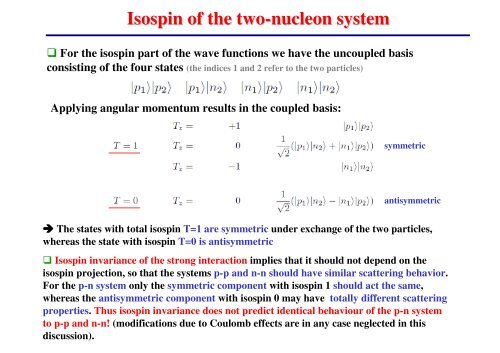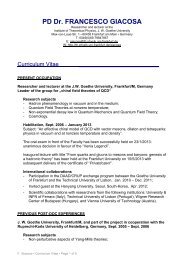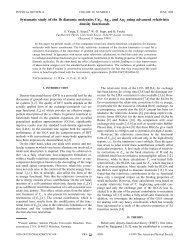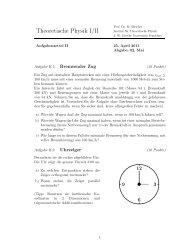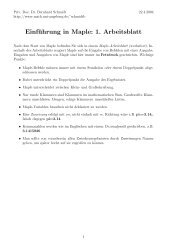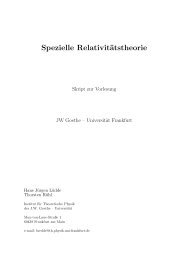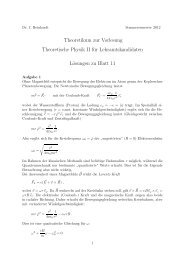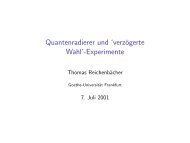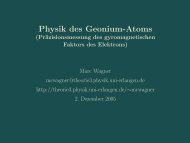Coupling of Angular Momenta Isospin Nucleon-Nucleon Interaction
Coupling of Angular Momenta Isospin Nucleon-Nucleon Interaction
Coupling of Angular Momenta Isospin Nucleon-Nucleon Interaction
Create successful ePaper yourself
Turn your PDF publications into a flip-book with our unique Google optimized e-Paper software.
<strong>Isospin</strong> <strong>of</strong> the two-nucleon system<br />
For the isospin part <strong>of</strong> the wave functions we have the uncoupled basis<br />
consisting <strong>of</strong> the four states (the indices 1 and 2 refer to the two particles)<br />
Applying angular momentum results in the coupled basis:<br />
symmetric<br />
antisymmetric<br />
The states with total isospin T=1 are symmetric under exchange <strong>of</strong> the two particles,<br />
whereas the state with isospin T=0 is antisymmetric<br />
<strong>Isospin</strong> invariance <strong>of</strong> the strong interaction implies that it should not depend on the<br />
isospin projection, so that the systems p-p and n-n should have similar scattering behavior.<br />
For the p-n system only the symmetric component with isospin 1 should act the same,<br />
whereas the antisymmetric component with isospin 0 may have totally different scattering<br />
properties. Thus isospin invariance does not predict identical behaviour <strong>of</strong> the p-n system<br />
to p-p and n-n! (modifications due to Coulomb effects are in any case neglected in this<br />
discussion).


